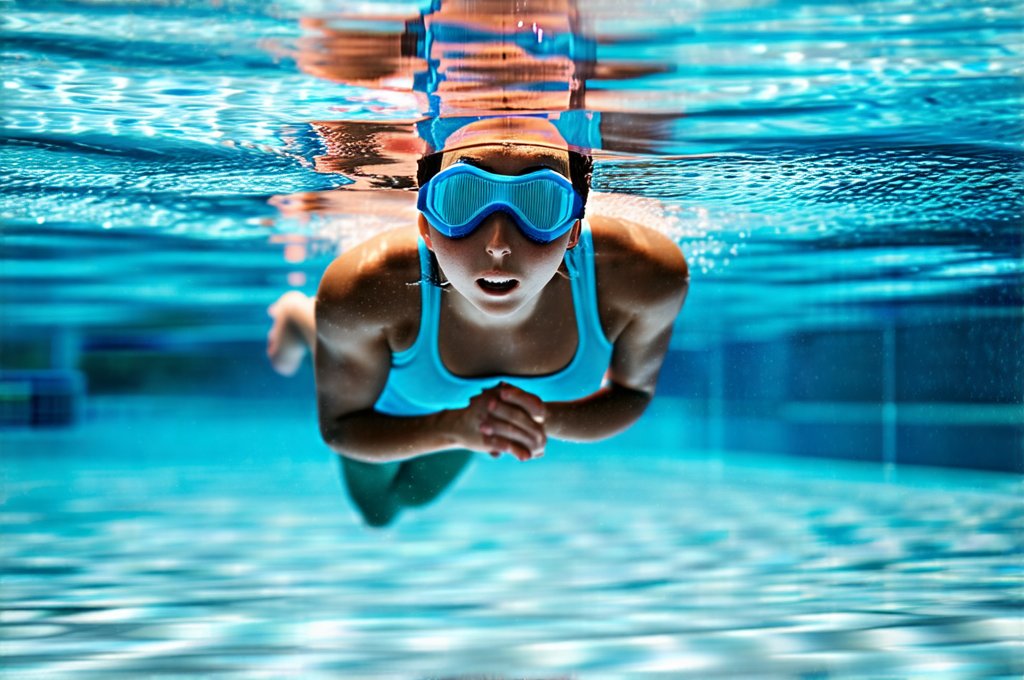Cystitis, an inflammation of the bladder, is a common ailment, particularly among women. Symptoms can range from mild discomfort to severe pain, often accompanied by frequent urination and a burning sensation. Many individuals understandably seek ways to enjoy recreational activities like swimming without exacerbating their condition or increasing their risk of developing cystitis. While swimming itself is generally considered healthy exercise, concerns arise when considering potential exposure to bacteria present in lakes and pools. The question then becomes: can swimming in these environments actually increase the risk of developing cystitis? Understanding this requires a nuanced look at the different types of water bodies, common causative agents of cystitis, and preventative measures individuals can take.
The relationship between swimming and cystitis isn’t straightforward. It’s not necessarily swimming itself that causes the problem but rather the potential for bacterial contamination or disruption of the natural vaginal flora. This is particularly relevant for women due to their shorter urethra, making it easier for bacteria to travel from the perineal area to the bladder. While chlorine in pools and natural factors in lakes can help mitigate some risks, they aren’t foolproof. Furthermore, individual susceptibility varies greatly; those with weakened immune systems or pre-existing conditions may be more vulnerable. This exploration will delve into these complexities, offering a balanced perspective on swimming and cystitis risk.
Pool Swimming and Cystitis Risk
Pools, despite being chemically treated, are not entirely sterile environments. While chlorine effectively kills many harmful bacteria, it doesn’t eliminate them all, and some can even form resistant biofilms on pool surfaces. Pseudomonas aeruginosa is a bacterium commonly found in pools and is a known causative agent of bladder infections, particularly in swimmers. This bacterium can colonize the perineal area after swimming and then migrate to the urethra, potentially leading to cystitis. Additionally, the chemical balance of the water – pH levels and chlorine concentration – plays a crucial role. Improperly maintained pool chemistry can not only reduce the effectiveness of disinfection but also irritate the delicate tissues around the urethra, increasing susceptibility to infection.
Beyond bacterial contamination, frequent exposure to chlorinated water can disrupt the natural vaginal flora in women. This disruption can decrease the number of beneficial bacteria that help protect against harmful pathogens, creating an environment where opportunistic infections are more likely to occur. It’s important to note that not everyone will experience this disruption; individual sensitivity varies based on factors like frequency of swimming and personal hygiene practices. However, those prone to recurrent cystitis may be particularly vulnerable to this effect. – Some individuals might also experience increased heart rate with UTIs: can utis increase heart rate in women.
Finally, the act of sitting in wet swimwear for extended periods can also contribute to increased risk. Damp environments promote bacterial growth, further increasing the likelihood of colonization and subsequent infection. Therefore, promptly changing out of wet swimwear after swimming is a vital preventative measure.
Lake Swimming and Cystitis Risk
Lake water presents different risks compared to pool water. Unlike pools, lakes are natural bodies of water containing diverse microbial communities, including bacteria like E. coli and other fecal coliforms that can originate from animal waste or sewage runoff. These bacteria pose a greater risk of causing cystitis than those typically found in well-maintained pools. The level of contamination varies significantly depending on factors such as rainfall, proximity to agricultural areas, and the presence of nearby settlements. – Regular testing of lake water quality is essential for determining its safety for swimming, but this isn’t always consistently done or publicly available.
Furthermore, lakes often contain sediment and organic matter that can harbor bacteria and provide a breeding ground for them. Contact with this sediment during swimming can increase exposure to pathogens. The absence of chlorine disinfection in natural waters means that bacterial populations are not actively controlled, making the risk of contamination inherently higher than in pools. – Individuals should avoid swimming in lakes after heavy rainfall or near potential sources of pollution. It’s also important to consider if can you have cystitis after swimming in a pool applies here too, given the similarities in risk factors.
However, it’s important to acknowledge that lake water also contains beneficial microorganisms and minerals that can have positive health effects. The key difference lies in the increased variability and unpredictable nature of bacterial contamination compared to controlled pool environments.
Preventing Cystitis When Swimming: Practical Steps
Preventative measures are crucial for minimizing cystitis risk, regardless of whether you’re swimming in a lake or a pool. Here’s how to stay safe:
* Urinate before and after swimming: This helps flush out any bacteria that may have entered the urethra.
* Shower immediately after swimming: Thoroughly wash the perineal area with soap and water to remove any potential contaminants. – Consider using an antibacterial soap, but avoid harsh chemicals or fragrances that can irritate sensitive skin.
* Change out of wet swimwear promptly: Don’t sit around in damp clothing for extended periods.
* Dry thoroughly: Ensure the perineal area is completely dry after showering to discourage bacterial growth.
Boosting Your Natural Defenses
Strengthening your body’s natural defenses can also help reduce cystitis risk. This involves several strategies:
* Hydration: Drinking plenty of water helps flush out bacteria from the urinary tract. – Aim for at least 8 glasses of water per day.
* Dietary Considerations: Some studies suggest that consuming cranberries or D-mannose may help prevent bacterial adhesion to the bladder wall, although more research is needed. Consult with a healthcare professional before incorporating these supplements into your diet.
* Probiotics: Supporting gut health with probiotics can strengthen the immune system and enhance natural defenses against infection.
When to Seek Medical Attention
Recognizing the early signs of cystitis is crucial for prompt treatment. If you experience any of the following symptoms after swimming, it’s important to consult a healthcare professional:
* Frequent urination
* Burning sensation during urination
* Lower abdominal pain or pressure
* Cloudy or bloody urine
* Strong-smelling urine
Ignoring these symptoms can lead to more serious complications, such as kidney infection. Early diagnosis and treatment with antibiotics are typically effective in resolving cystitis. Remember this information is not a substitute for professional medical advice. Always consult with a qualified healthcare provider if you have concerns about your health. Can bladder prolapse increase UTI risk as well, which may exacerbate symptoms?





















